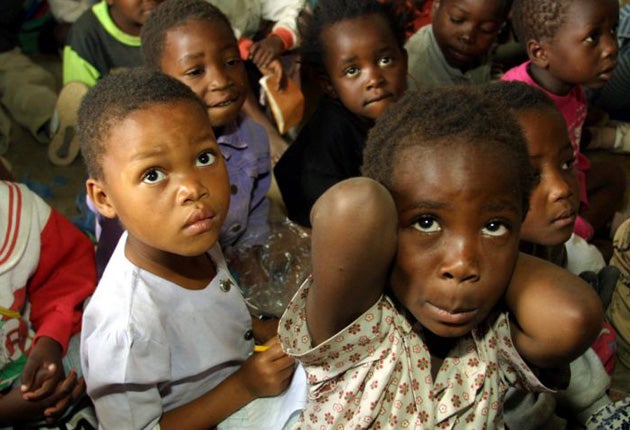Gel 'cuts rate of HIV infection by 50 per cent'

Scientists yesterday hailed a potential breakthrough in the fight against Aids after a vaginal gel was found to cut HIV infection rates by up to 50 per cent.
The gel, which was tested on high-risk women in South Africa, contains the Aids drug tenofovir. It was found to halve HIV infection rates after one year of use, and after two and a half years of use still resulted in a 39 per cent fall in infections. If the results are confirmed it will be the first time that such a gel has been shown to be effective.
It is hoped the gel could be used as a defence for women whose partners refuse to wear condoms. In sub-Saharan Africa nearly 60 per cent of those infected with HIV are women.
Rates are higher because women are often forced to take part in unsafe sex and are biologically more vulnerable to HIV infection than men. Any protection that women are able to administer themselves has been considered one of the keys to fighting Aids.
UN agencies said they would convene an expert consultation in South Africa next month to discuss the next steps with the product.
The results have been announced after a three-year study conducted by the Centre for the Aids Programme of Research in South Africa (Caprisa) a country with one of the highest rates of HIV infection in the world. They are being presented at an international Aids conference in Vienna and were published yesterday by the US magazine Science. The gel was found to provide protection when used once in the 12 hours before sex and once in the 12 hours after sex by women aged between 18 and 40 years.
"It's the first time we've ever seen any microbicide give a positive result that you could say was statistically significant," said Dr Anthony Fauci, director of the National Institute of Allergy and Infectious Diseases.
Women who used the gel also showed a significant reduction in genital herpes, a common sexually transmitted infection which itself increases the risk of HIV infection. Nearly 20 years of research have gone into preventative microbicides that can be controlled by a woman, independently of her partner.
The research will still require substantial analysis and it will be years before it can conceivably be made available on a significant scale, but it marks the first time that a product containing an antiretroviral drug used for treating HIV has been successfully applied to prevention. "We are giving hope to women," said Mr Michel Sidibe, executive director of UNAids. A microbicide, he said, would be a "powerful option for the prevention revolution and help us break the trajectory of the Aids epidemic".
Dr Margaret Chan, director-general of the World Health Organisation, welcomed Caprisa's findings. "We look forward in seeing these results confirmed," she said. "Once they have been shown to be safe and effective, WHO will work with countries and partners to accelerate access to these products."
The gel is now likely to undergo extensive clinical trials. Concerns have been raised that the use of Tenofovir in a preventative capacity could jeopardise its effectiveness as a treatment by increasing the chance of HIV developing a resistance to it.
Join our commenting forum
Join thought-provoking conversations, follow other Independent readers and see their replies
Comments
Bookmark popover
Removed from bookmarks